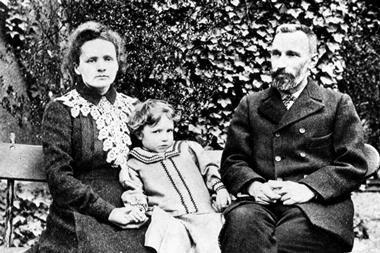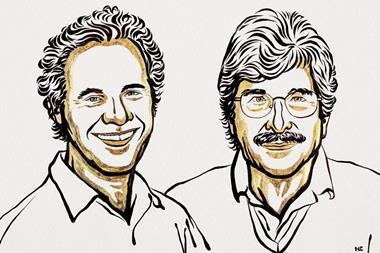What happened in 1924?
What would happen if the entire chemistry community was told their work was not good enough? Could the news demoralise chemists or inspire them to strive to break this cycle? In 1924, that’s exactly what happened; there were 35 nominees for the Nobel prize in chemistry, yet instead of selecting a winner, the committee chose not to award the prize that year.
This was a rare decision that has only happened eight times in history, with six of these instances occurring because of the chaos of world wars. Additionally, the 1925 Nobel prize in chemistry was delayed by a year before being given to Richard Zsigmondy in 1926. This marked two consecutive years with little hope given to chemists that their contributions would be believed to be a ’great benefit to humankind’.

Among the nominees in 1924 were Georges Urbain and Lise Meitner.
Urbain’s work was widely recognised, as he received a total of 56 nominations across all years, though he never won the prize. He worked on the discovery and isolation of several elements, discovering lutetium in 1907. In 1922, he claimed to have discovered element 72, which he called celtium, and published a fully characterised emission spectrum’. However, he mistakenly identified it as a rare earth element, and the spectrum did not match the actual element 72: the transition metal hafnium, which was also discovered and first isolated in 1922. This error likely overshadowed his amazing work on the other elements he correctly identified and may have contributed to why Urbain did not receive the Nobel prize in 1924.
Lise Meitner was the second woman ever nominated for a Nobel prize, apart from Marie Curie. I found this interesting to learn about because despite Albert Einstein calling her the ‘Marie Curie of Germany’, I had never heard of her. Meitner’s contributions were downplayed due to prejudice. Meitner and Otto Hahn were among the first to isolate the isotope protactinium-231 in 1917/18, and Meitner discovered the cause of the Auger effect in 1922, which should have made her a frontrunner for the Nobel prize.
Meitner later worked with Hahn on nuclear fission and hypothesised that the uranium nucleus split in two during nuclear fission. However, Hahn published their findings without crediting her and later won a Nobel prize in 1944. At this time, Meitner was living in exile in Sweden – because she was Jewish, she had fled Nazi Germany in 1938. Her gender and religion may have played a role in her not receiving the Nobel prize. Moreover, she refused to be involved in the development of the nuclear bomb, which may have further aggravated Hahn, leading to the lack of credit she received.
Meitner’s unwavering morals during these challenges testify to her resilience and merits. As a woman, I am honoured to have learned her story. In 1924, I believe she was nominated along with Otto Hahn for the isolation of isotope protactinium-231, but I suspect the lack of acknowledgement for her research greatly influenced the fact that she did not receive a Nobel prize in 1924 and again in 1944.
From the data on the number of patents, Nobel prize nominees and papers published in chemistry journals indexed by Web of Science, there was a noticeable decrease in all three in 1925. In fact, that year the number of Nobel prize nominations hit its lowest in the 1920s, with only 25 nominations. However, it’s important to consider other factors before concluding that chemists became discouraged due to the lack of the Nobel prize, such as outside effects that could affect the amount of funding or lab space available to chemists.
Although this data suggests that chemists seem to have experienced a setback the year after not receiving a Nobel prize, I think it is vital to value excellence and not settle for anything less. Meitner said science ‘teaches people to accept reality’, and even though this reality is disheartening, that’s exactly what the lack of Nobel prizes seemed to do. The scientific community accepted this as the reality and worked even harder to overcome the problem . In 1925, rhenium was discovered, and the Fischer-Tropsch process was developed as a way to create hydrocarbons. Meitner herself showed resilience, as her later work on nuclear fission shows.
Chemistry is about identifying things that don’t work and working out how to fix them. Therefore, it is no surprise that the chemistry community became even more dedicated to improving their work.












2 readers' comments